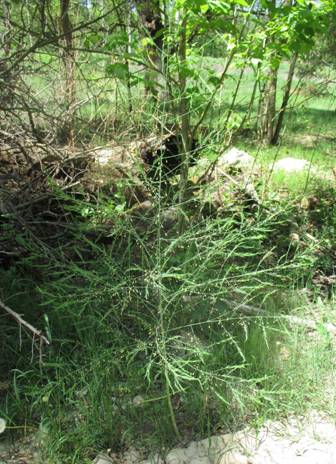
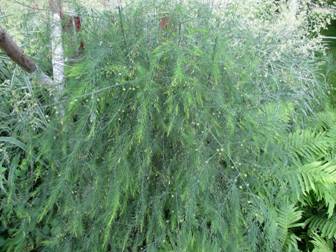
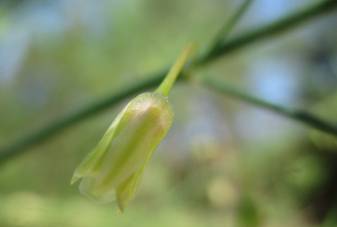
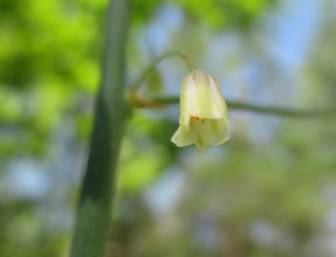
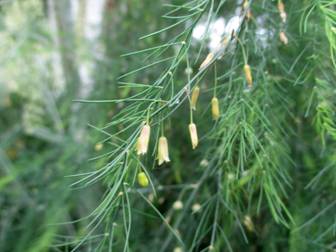
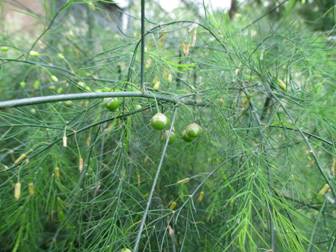
Asparagus, fam. Asparagaceae.
Sometimes this plant can be seen as ornamental in garden beds. It also occurs in the forest rarely, maybe introduced occasionally by people. A peculiar appearance of the plant (associated with conifers or horsetails) is explained by the fact that its leaves are not developed, at their role is played by very branched thin shoots (cladodes).
In late May till June the thicker of the shoots cover with inconspicuous little flowers, which are quickly replaced by green berries. In the end of summer these fruits ripen and become bright-red. They are toxic, and here we should remind ourselves of the relative links between asparagus and Lily of the valley, May Lily, and Solomon's seal.
Asparagus is used in dietary nutrition. Its very low caloric value is combined with complete range of amino acids (proteins), vitamins and minerals. It is used in cooking salads, soups, recommended for liver, kidney, gout, diabetes patients, against edemas and for appetite stimulation. Only very young shoots can be eaten, sometimes even those which have not appeared over ground. Thus, wild asparagus is hardly possible to be used for this purpose – we see it too late. Moreover, only few of several dozen asparagus species are edible. Anyway, it is not wise to overeat this rare vegetable, since asparagus contains some substances irritating for digestive tract, and may give unpleasant smell to urine.